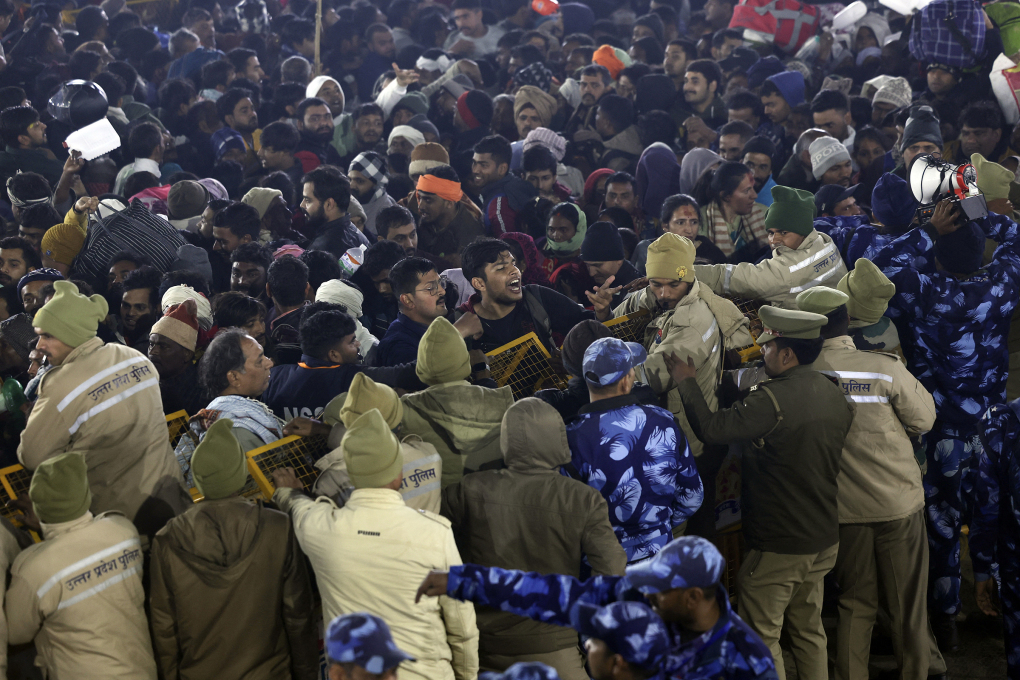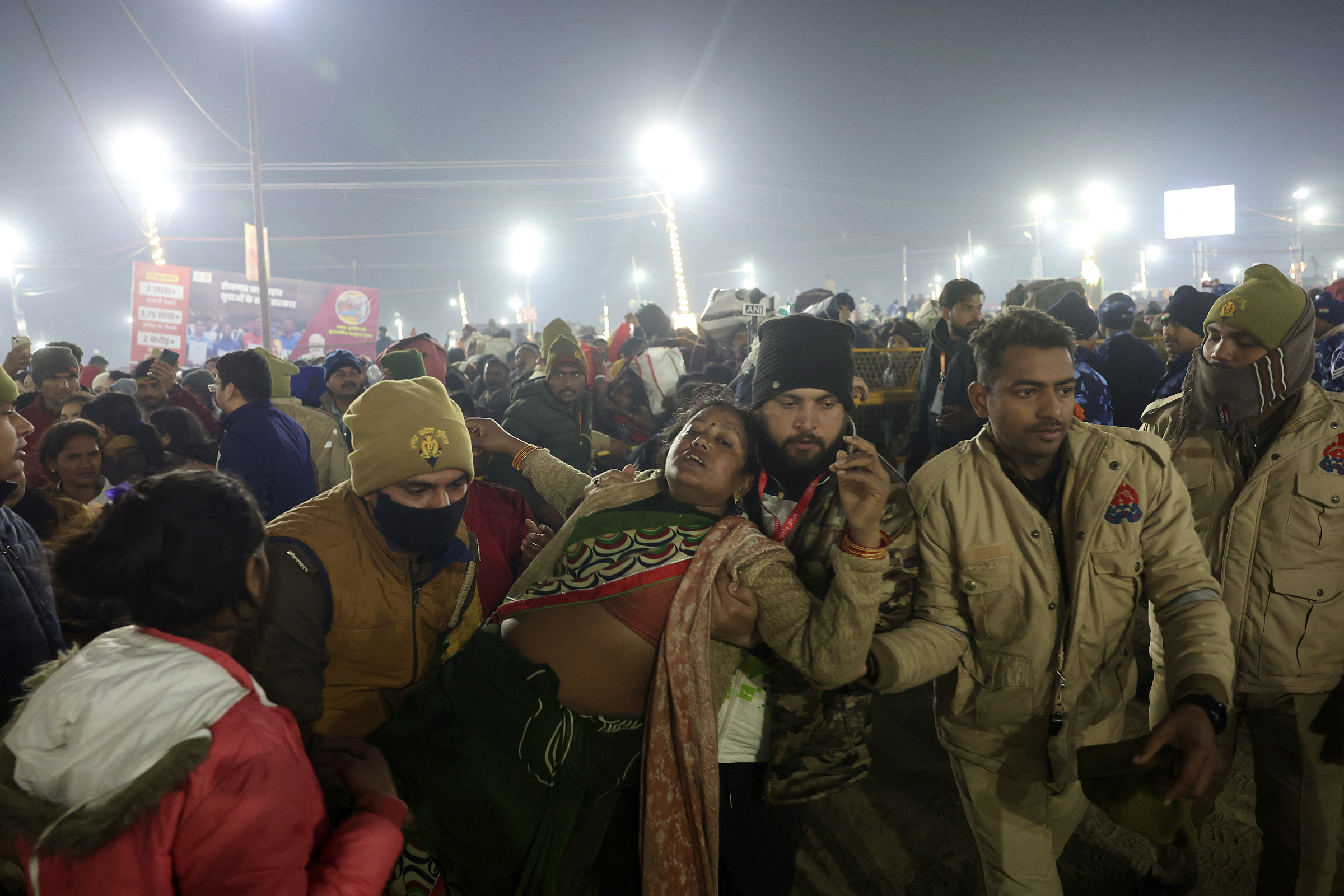
Security personnel try to control the pilgrims near the site of a stampede amid the ongoing Maha Kumbh Mela festival in Prayagraj on January 29, 2025. A stampede at the world's largest religious gathering in India killed at least 15 people with many more injured, a doctor at Kumbh Mela festival told AFP. (Photo by Niharika KULKARNI / AFP)
Crowds rushed in as people lay or sat waiting for their turn to bathe during the Kumbh Mela in Uttar Pradesh, leading to a stampede that left 38 people dead.
On their journey across much of India to take part in the Hindu holy river festival held every 12 years in the city of Prayagraj, Laxmi and her family slept on the side of the road as they waited for their turn to bathe in the holy Ganges River.
Suddenly, they were hit with wooden sticks by police and woken up in the middle of the night. Police asked them to move to make way for other pilgrims.
Police continued to try to clear the way for the crowd of worshippers who were pouring in. “A huge crowd rushed forward, pushing and trampling us. In the chaos, my sister-in-law died,” Laxmi said as she huddled in a thick woolen shawl on January 29. She was still in shock after the incident.
Laxmi’s family was among millions of people who wanted to take part in the Kumbh Mela, the world’s largest mass bathing festival. The stampede caused the disaster, which left at least 38 people feared dead.
Groups of people were sitting or lying on the banks of the river as the crowd behind them pushed forward in three separate areas at the Triveni Sangam confluence in Prayagraj, Uttar Pradesh, northern India, the holiest site for the Kumbh Mela.

Triveni Sangam is considered the confluence of the Ganges, Yamuna and Saraswati rivers in legend. Hindus believe that bathing here will help purify the soul.
“If we talk about the worst Kumbh Mela in history, it will be the 2025 season,” said Mata Prasad Pandey, 65, a retired teacher.
Pandey complained that he had to walk more than 25 km because of restrictions on transport by the organisers. “Older people and women were forced to walk for a long time,” he added.
The paths and barricaded areas reserved for celebrities attending the bathing ceremony have angered locals, as they have limited space for ordinary pilgrims. Crowds shouted at police for forcing them to walk to the festival area while giving priority to celebrities traveling by car.
Indian opposition leader Rahul Gandhi accused organisers of “poor management” and focusing on high-profile devotees, which he said led to the deadly stampede.
Others, including Prayagraj resident Rekha Verma, criticised the police’s brutal tactics in keeping the crowds in line. “The police used force to control the crowd and that’s why the tragedy happened,” Verma said.
Others felt uncomfortable staying at the festival, despite the long and arduous journey.
“We walked all night to reach the bathing place, but now I don’t think it’s safe,” said pilgrim Nirmala Devi. “There were children and elderly people in the group. We were on our way home, safety is the most important thing.”
Organizers claim to have adopted technological advances for this year’s Kumbh Mela, including a comprehensive artificial intelligence-powered surveillance system to provide advance warning of dangerous crowding.
“The government has been saying on TV that it has made all the arrangements, but now we see that they have failed. If you watch the advertisements, it looks like the government is providing world-class facilities. But this stampede has proved it all a lie,” said student Ruchi Bharti.
The Kumbh Mela is the world’s largest mass bathing festival, held every 12 years and attended by hundreds of millions of devotees. This year’s festival, which began on January 13 and will last for six weeks, is expected to attract 400 million people.
The Kumbh Mela is rooted in Hindu mythology about a battle between gods and demons for control of a pot of the nectar of immortality. Four drops of nectar fell during the battle, with one falling in the city of Prayagraj, where the main Kumbh Mela takes place. The remaining three drops fall at Nashik, Ujjain and Haridwar, where smaller festivals are held in alternate years.




